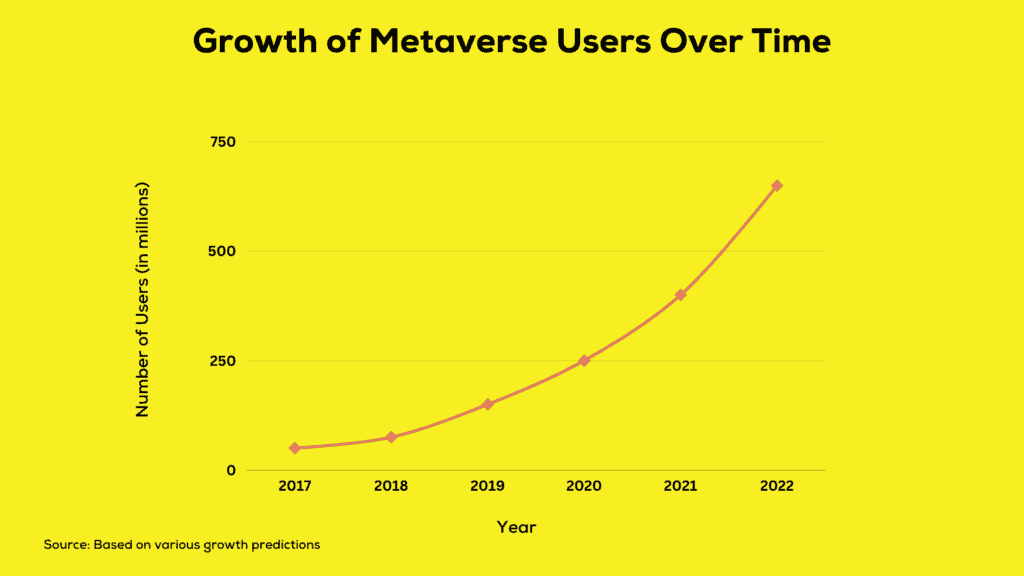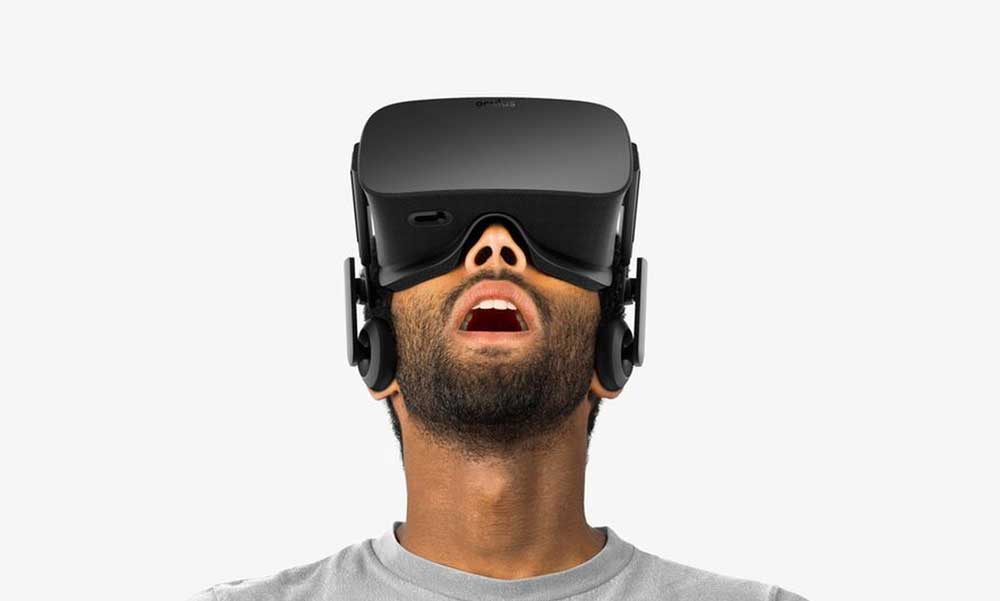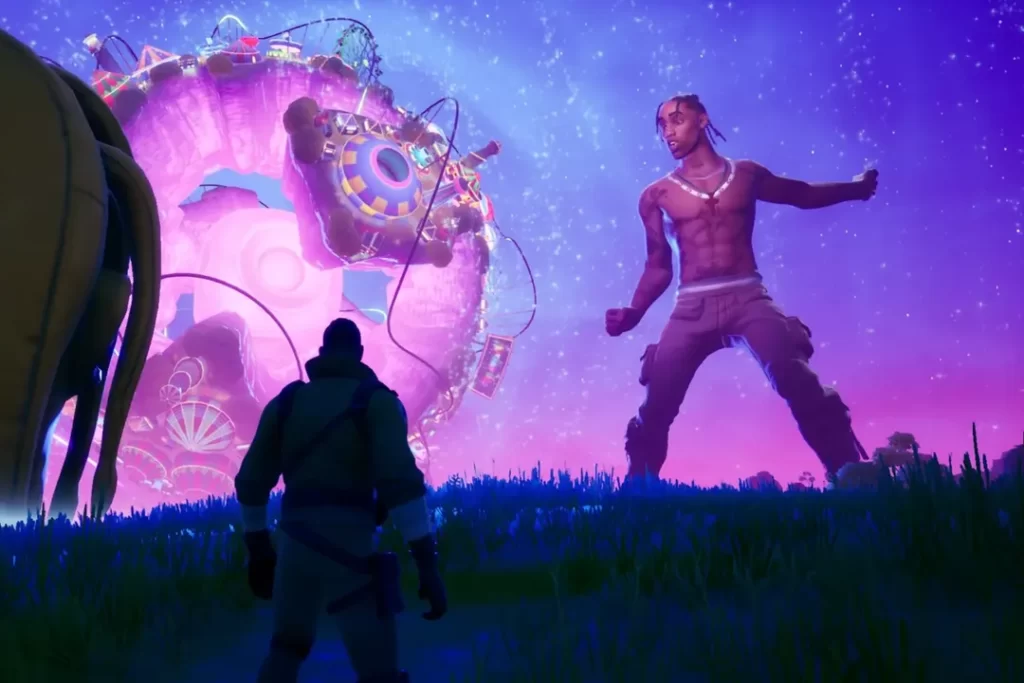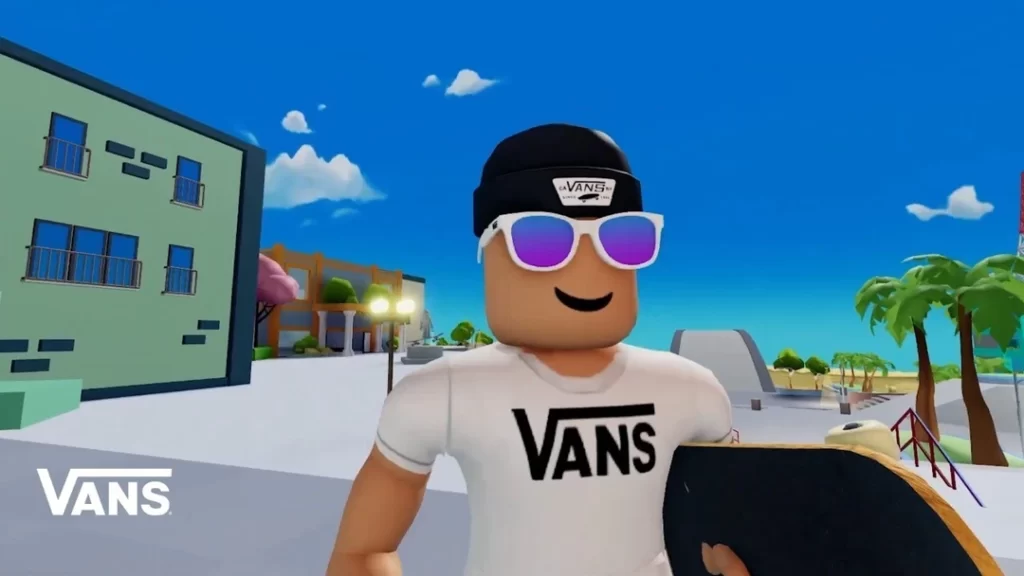The Metaverse: A New Frontier for Brand Marketing
The Metaverse is getting ready to shake up how we do things online and how brands market themselves. As virtual and augmented reality get better, people want more immersive experiences with brands, not just dull old ads.
In 2021, many people suddenly got super interested in the word “metaverse”, according to Google – 7,200% more interested. The chart below clearly explains the phenomenal growth of the Metaverse over five years, from 2017 to 2022.

That means a whole bunch of people are curious about it. Innovative companies can start shaping how they're seen in this new space. But to do that, they'll need to rethink how they do their marketing.
It would be best to have something that makes you stand out in the branding business, and that's where Godigi comes in. You will surely see an improvement with new and reimagined branding tactics. However, next-gen marcom is vast, like the ocean, which wants to be explored. So, let's do that.
Let's explore how next-gen marcom and creative brand storytelling can captivate audiences in the Metaverse.
Table of Contents
The Cutting Edge of Visual Fidelity

One big thing that makes the metaverse special is that it cares about having super realistic graphics and physics that make it feel just like the real world. According to a survey by Ericsson, 41% of people say that having super realistic visuals is the most essential part of virtual reality.
To see how good visuals can change people's thoughts about a brand, BMW, a well-known car company, made a digital showroom in Roblox. In there, players could check out all the tiny details on the latest BMW cars in a detailed virtual way.
The cool thing is that this immersive BMW experience in the Metaverse helped show off BMW as an aspirational brand. People were so into it that they spent 2.7 million hours exploring it.
The beauty brand Clinique also got in on the action. They let users in Animal Crossing (another hugely popular game on Nintendo Switch) try on their lipstick and makeup stuff on their game characters before deciding if they wanted to buy the actual products in real life.
Once they did this, Clinique noticed something pretty cool. They had a significant 20% increase in sales of their lip products. This shows that letting people try things virtually helps them decide to buy the real stuff.
As VR technology improves, realistic graphics become crucial for showing off products and making brands stand out.
To make things look ultra-realistic, brands put their money into game engines like Unreal Engine 5, which give you movie-like visuals. For example, BMW used Unreal Engine's MetaHuman tech to make digital characters that moved and acted like real people in their metaverse world.
They even involve architects in designing virtual spaces that match the brand's style to the last detail. Gucci, the fancy Italian fashion brand, worked with a virtual architecture studio called HOLO to make their immersive Roblox world look awesome.
And don't forget about lighting – that's important too. Disney got help from a visual effects studio, Lux Machina, to ensure everything was lit up and textured perfectly in their metaverse world. Like in Disney's artwork, they wanted the colours and materials to be just right.
Brands are spending big money on fancy graphics cards, 3D artists, and all the latest game-making tools. Why? Because they're the ones who'll set the standard for what we expect metaverse features to look like in the future.
Immersed in Interactive Experiences
In the Metaverse, ads become exciting adventures that users can jump right into and enjoy. Take Hyundai, for example. They built a thrilling virtual test track in Roblox.
In this track, players race stunning concept cars on a wild circuit with loops and jumps to make your heart run. But that's not all – Hyundai added snacks, puzzles, cool retro game areas, and even spots for taking awesome photos, turning their metaverse space into a fun place.
In just three weeks, more than 471,000 different people tried out Hyundai's test track. And get this – they spent an average of nearly 30 minutes there each time. That's a lot longer than most online interactive experiences.
This success shows that interactive spaces where users get to call the shots work way better than just showing them ads. For example, Fortnite is worth a whopping $28.7 billion because players spend tons of time hanging out and exploring its virtual world and, of course, getting that “chicken dinner” win.
In the Metaverse, brands should aim to create spaces people want to be part of, not just places to show off ads. The key is getting consumers to be active participants.
The Power of Immersive Events

Significant virtual events are becoming massive, with tons of people joining in on the fun. In 2020, rapper Travis Scott put on a 10-minute concert in Fortnite, and 12.3 million people watched it live. 12 million people!
Taking advantage of this, McDonald's developed a special Travis Scott meal deal, and their sales shot up by 4.8% in the next quarter. That was the most significant jump in over ten years.
Then, Ariana Grande outdid Travis Scott by getting a mind-boggling 78 million Fortnite players to her virtual Rift Tour concert in 2021. Fans could even dress up their game characters, hang out before the show, and watch a digital version of Ariana Grande fly around the stage.
Because so many people are getting into these virtual concerts, 93% of music bigwigs plan to spend more on metaverse stuff. And a lot of other brands are doing the same.
Vans threw a virtual skateboarding contest in Roblox and had 4 million visits. Gucci made a cool garden-themed metaverse place to play games and buy special digital items.
As regular events start mixing in the virtual world, adding VR elements will be more critical. It'll make people feel like they're missing out if they're not there in person and give people far away a more immersive experience.
Crunching the Data That Matters
The Metaverse is like a goldmine for getting crucial info about what consumers like. You can track and study everything people do to make experiences even better.
Take Coca-Cola, for example. They partnered with Epic Games to put their digital clothes and mini-fridges into Fortnite. And guess what? More than 11 million players loved it and used the virtual Coca-Cola products.
Here's the cool part: Before this, Coca-Cola figured that only 1% of their ads got people to do something in the real world. But with Fortnite, 3.5% of players scanned QR codes and bought products after checking out the digital items in the game. So they got a clearer picture of how people decide about their brand.
Even Procter & Gamble, a big company, is all about learning from their early metaverse tests instead of just making sales. Even if people don't buy something immediately, it changes how they see the brand. The key is figuring out how it all fits together.
The Metaverse is like a dream come true for companies that love data because it's crystal clear and open about what's happening.
Leveraging Influencer and Creator Partnerships

In the Metaverse, teaming up with popular gaming streamers, esports stars, and other influencers is like having a ready-made audience for your brand.
Let's take Champion, the sportswear brand, for example. They joined forces with gaming influencer Tyler “Ninja” Blevins to create a virtual clothing line in Fortnite. Ninja has a considerable following, especially among young gamers, giving Champion's digital fashion push an instant boost in visibility and credibility.
The shoe brand Vans did something similar by sponsoring well-known creators in Roblox. These creators featured Vans products in their games, and in just one week, more than 25 million players checked out Vans virtual shoes in player-made Roblox games.
Just like how social media influencers change how we see brands, virtual influencers and creators are super important partners for connecting with metaverse users in a way that feels real. They're like brand ambassadors that belong right in these digital worlds.
Setting New Standards With UGC and NFTs
User-generated content (UGC) and non-fungible tokens (NFTs) hold a ton of promise in the Metaverse (although NFTs can be polarising).
For instance, Coca-Cola came up with a fantastic Roblox Creator Challenge. They asked players to design their virtual Coca-Cola vending machines and restaurants. And guess what? Regular folks got super creative and came up with even better stuff than the experts expected.
Brands can also let users make unique NFTs by adding accessories or mixing designs. When people feel like they own something special, it makes them feel even more connected. Charmin, the toilet paper company, made limited edition NFT toilet paper rolls that people could “decorate.” It shows how much potential there is in this.
It's a win-win when brands give people the freedom to be creative. They get fantastic metaverse stuff without spending tons of money, and customers get to be part of the fun by shaping how the brand shows up in the Metaverse.
Crafting a Consistent Omnichannel Narrative

In the Metaverse, it's vital for a brand's activation to connect with its overall storytelling across all channels.
For example, Wendy's set up a virtual restaurant in the game Royale High and made sure it looked just like a real Wendy's place. They also brought their fun social media style with virtual stuff like baked potatoes and shake bombs.
Chipotle did something similar by putting menu items like burritos and avocado handbags in Roblox to bring their brand into the Metaverse. Keeping the branding consistent is still a big deal, even as things change in these virtual spaces.
Since people's identities and what they buy can quickly move between the virtual and real worlds, it's super important for everything to make sense together. The Metaverse gives brands new ways to tell their stories, but the main story is still the same.
Transport Brand DNA Into the Metaverse
When brands step into new virtual worlds, they've got to bring their unique style along. That means ensuring everything in the Metaverse matches their look, message, personality, and more to tiny little details.
Take PUMA, for instance. They made an island in Roblox that looked just like their actual stores. Players could grab virtual PUMA shoes and clothes for their game characters, join treasure hunts, and even do parkour challenges – all things that made the PUMA brand stand out.
Every detail, from the colours and materials to how the story is told, has to bring the brand's spirit into the Metaverse. Keeping things the same and making sure people can recognise the brand is crucial for connecting with the audience.
Build Experiential Bridges Between Worlds
Linking the virtual and the physical worlds through shared experiences can create strong connections.
For example, after putting on virtual concerts in Fortnite, stars like Ariana Grande started doing real-life concerts with visuals and stages that looked just like the Metaverse. Fans who visited the virtual shows got a sneak peek at the real-world performances.
Chipotle tried something else. They gave out free burritos to people who cracked their Roblox scavenger hunt in their restaurants. This got people moving back and forth between the digital and real worlds.
When you mix these two worlds, it makes the brand feel complete. The cool things you get in the Metaverse can also make you want to buy something in the real world, and it works the other way around. It's all about making sure things intelligently come full circle.
Make Every Touchpoint Reinforce Brand Stories
As users hop around from websites to apps, stores to events, social platforms, and metaverses, they should feel like they're in a world that all fits perfectly.
First, ensure your message is the same regardless of where people see it. Also, use the same logos, pictures, and designs everywhere. You can use tools like content hubs and digital asset management to make it easier to share data across different channels.
Tell one big brand story that unfolds over time in all these places for the most impact. Each thing you do should add to the story instead of being a one-time thing.
Since people spend time online and offline, ensuring everything they see matches up is vital. Being consistent helps people trust your brand more and feel like they're part of something special.
Success Stories Blazing the Trail

Top-notch brands are already exploring the virtual world and showing the path for everyone else:
1 – Balenciaga
Balenciaga made ultra-realistic Fortnite outfits that looked just like their fancy fashion designs. They even called them the “most spot-on digital clothes ever created for gaming.” And guess what? Over 2 million players snatched them up to show off their digital fashion sense.
2 – Verizon
Verizon went big and organised a series of virtual concerts in Roblox, all powered by their super-fast 5G network. These shows brought in millions of music-loving Gen Z fans and, at the same time, quietly let everyone know what Verizon is all about.
3 – Heineken USA
Heineken USA got creative by sending VR headsets and cans of their fancy lager to adults. They let people try the beer in virtual reality and gave them a unique look at Heineken's famous “Inside the Green” virtual brewery. It was like a whole new way to enjoy a beer.
4 – Disney
Disney showed off how cool digital collectables can be. They released NFTs (that's like virtual collectables) to celebrate their fantastic animated movie, Lightyear. Fans could buy virtual pins, patches, and other pixelated stuff connected to the new film. It was a whole new way to enjoy their favourite characters.
5 – Nike
Nike went one step further than other companies by buying a virtual shoe company called RTFKT and grabbing some virtual land in blockchain-based worlds. They're taking their sneaker culture to all-new places.
These examples show that brands with a vision use the Metaverse as a playground to try out new stuff. What they learn can help us figure out how to do even bigger and better things in brand marketing in the Metaverse. We're heading into uncharted territory with so much to explore!
Key Takeaways and Looking Ahead
When it comes to the Metaverse, here are a few things to keep in mind:
- Make sure everything looks super real. People judge quality in virtual worlds by how things look and work. Match your visuals with your brand.
- Get people involved. Interactive stuff is way better than just showing ads. Let users have a say in what happens.
- Mix the real world with the virtual world. Combine physical and virtual events to reach more people and make real connections.
- Use data to see how people make choices. Connect what people do in the virtual world with what they do in the real world.
- Start testing things out in gaming worlds to see what works. Use what you learn to plan for the future in the Metaverse.
The Metaverse is still new but full of fabulous marketing opportunities. Brands building their virtual brand now will be ahead of the game when connecting with future customers. So, the time to begin in the Metaverse is right now.
Frequently Asked Questions
How much should brands budget for high-quality metaverse activations?
For extensive high-fidelity metaverse experiences, development costs often exceed $1 million. However, smaller activations can cost $25,000 to $250,000. Focus first on your goals before determining scope and budgets.
What metrics best gauge the success of metaverse marketing campaigns?
Track engagement stats like unique users, time spent, shares, and return visits. Also, analyse downstream conversion metrics online and offline tied to your business KPIs. Sentiment analysis is also insightful.
How can brands prevent their metaverse activations from feeling gimmicky?
Make sure experiences align with your brand purpose and identity. Also, consider seasonal tie-ins or value-adds that make sense for your audience. Don't just force promotions into virtual worlds. Focus on creating lasting utility and engagement.
What risks should brands be aware of in the Metaverse?
Avoid overcommercialisation and make sure experiences aren't just blatant ads. There may also be challenges replicating brand identities in new environments. Start small via testing to determine what resonates.
How can brands manage community and safety issues in the Metaverse?
Implement proactive moderation and utilise tools like spatial computing to curb toxic behaviour. User privacy and data usage policies must also be transparent as people spend more time (and share more data) in virtual worlds. Brand values matter here.
Wrapping Up
The Metaverse represents an exciting new opportunity for brands to connect with consumers more effectively. While still in its early stages, the possibilities for marketing in virtual worlds are endless. Brands that want to stay ahead of the curve need to start thinking now about how their marketing strategies might translate into these new environments.
The key will be finding ways to provide value and build relationships, not just blast ads. The brands that put in the work to understand the Metaverse and experiment with different approaches will be the ones who reap the rewards down the line. The future consumers will live more and more in virtual spaces. Forward-thinking marketers need to go where their customers are.
The metaverse journey will not happen overnight. But by being proactive and open-minded, brands can position themselves at the forefront of the following significant evolution in digital technology. While risky, the potential benefits make this a frontier worth pursuing. The Metaverse opens up a new landscape for brands to stake their claims. Marketers are now ready to gear up for this unique virtual voyage.
